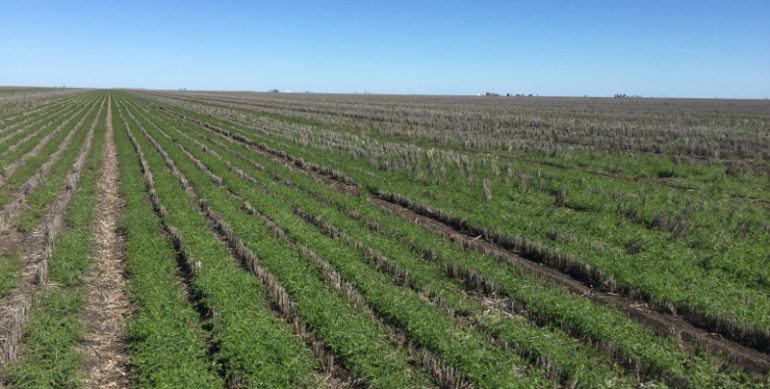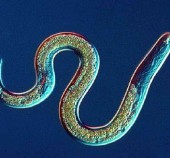Growing Chickpeas on the Downs this winter? Find advice here along with our choice of the best links.
We are rapidly approaching the planting window for Chickpeas on the Downs and the second we have some decent rain, planting will begin. I’m sure everyone has heard that there is the possibility of a wetter than usual winter and so precautions should be taken to limit the risk of another crop failure as in 2010. The field of Chickpea agronomy is large and varied and so the following eight points on how to best approach the upcoming season will only be part of what you need to know. Check out the Other Resources section of this article to find a more comprehensive picture.
- Variety choice should focus on strong Ascochyta resistance with both Boundary and Hattrick reasonable choices. Pulse Australia has some good detail on variety selection.
- Don’t underestimate the value of inoculant and make sure it is done right. Ensure that a Quality Assured inoculant is used. The GRDC has a thorough article on Inoculating Legumes.
- Beware of herbicide residuals! Ensure that there has been sufficient rainfall for them to break down. Last year we saw a number of fields where group C herbicides were interacting with the cold to supress plant growth.
- Consider reducing the row spacing to maximise yield potential. Research over the last three years has clearly shown improved yields when Chickpeas are planted at 25cm or 50cm row spacing’s. There is a caveat to this thinking however. A narrow row is more conducive to disease under wet conditions. You will need to consider whether you are prepared to take this additional disease risk to achieve larger yields.
- Follow recommended planting rates to ensure the best results however there are hints within recent research that, under optimal conditions and with high yield potential under an irrigator, a slightly higher planting rate of 35 plants/m² can achieve better yields.
- Ensure that you have access to fungicides. There are indications that there could be shortages so it may be worth stocking up to some extent now. If it is a wet year, you may be dealing with Botrytis Grey Mould again. At this time there are only a limited number of registered fungicides Here is some updated advice for disease management from Kevin Moore, NSW DPI.
- Treat for mice before you plant. In every field I have inspected that will be planted to Chickpea there have been massive numbers of mice. These numbers are likely to continue after planting so it's expected that we will have to treat for mice again. Given the high numbers of mice in the area and their ability to move long distances to acquire food, there might be a decent case for discussing area wide management with Grower Associations and other groups that could support this measure.
- It is very important to consider crop rotation and the effects this might have on Nemotode numbers. Planting chickpeas now may affect your Nemotode risk when planting winter cereals in the winter of 2017. See Black Earth Agronomists’ Director, Graham Boulton’s, brief guide on what to consider before planting this year’s winter crop on the Downs.
Other Resources
Pulse Australia
The Pulse Australia’s Growing Chickpea site has a thoroughly comprehensive page with a number of further links to articles to help with variety selection, best management guides, planting guides including information on inoculation, as well as weed, pest and disease management.
An equally important resource from Pulse Australia is its Best Management Guide for Chickpea Production: Northern Region. As described in the title, the article runs through the most important aspects of Chickpea production and the “Keys to successful chickpea production” section is full of practical information to consider.
GRDC
GRDC has an easily accessible document called the GRDC GrowNotes that breaks down everything you need to know about growing Chickpea.
DAF QLD
DAF Queensland has a central porthole called Chickpea production in Queensland. While not quite as comprehensive as Pulse Australia’s Growing Chickpea page, it is still worth a look with plenty of useful information regarding Chickpea varieties, planting, harvest and storage, as well as pest, weed and disease management. Unfortunately, the main site’s last update was July 2012 and some of the articles have not been updated since this time.
I would like to acknowledge the help of Kerry McKenzie in providing some helpful suggestions for this article.
Written by Robert Boulton
The information provided above is based on experience and knowledge developed while operating as an Agronomist on the Darling Downs. The opinions contained within this post are entire that, and may not apply to a grower's specific circumstance. We recommend consulting your own agronomist to ensure best performance on your own farm.




